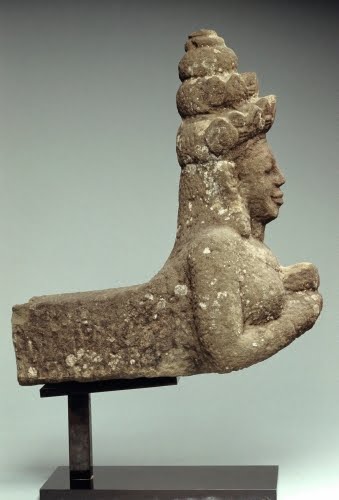Vietnam Part 1: Champa Kingdom
And speaking of political disasters this past week, I’m pretty sure most folks would agree that the Vietnam War (1955–1975) was one of them in the past. My problem with that—aside from war itself—is that most people’s frame of reference about Vietnam revolves around that awful, waste of a war.
Southeast Asia has been a region of fabulous kingdoms that flourished for centuries and produced fabulous art. Central and Southern Vietnam were the location of the ancient Champa Kingdom and Funan Kingdom. For goodness sakes, the Roman historian Ptolemy (100–170 CE) knew about the major Champa port city of Cattigara in 150 CE and put it on his map of the world. Cattigara is now called Ho Chi Minh City, once Saigon! An art historian’s recommendation for changing a frame of reference about Vietnam is look at Vietnamese art. This week I’ll be doing just that in a series of three posts all about the art of Vietnam.
 |
| Champa Kingdom (flourished from 600s to 1800s CE), Apsara bracket, probably from Tra-kieu (ancient Simhapura), 900s CE. Stone, overall height: 22" (55.9 cm). © Cleveland Museum of Art. (CL-827) |
An apsara is the depiction of celestial spirits of clouds and water in Buddhist and Hindu art. Tra-kieu, the ancient Simhapura, meaning Lion Citadel, was the capital of the Champa kingdom from the 300s to the 800s CE. The Cham people were converted to Hindu by Indian missionaries as early as the first century CE. There are some theories that the first Cham king was Indian, but the first recorded king was Bhadravarman (ruled 349–361 CE).
Champa was a powerful and wealthy Hindu kingdom. The Cham people, to this day, are the only Hindu population remaining in Vietnam, even though Southeast Asia at one time had many thriving Hindu kingdoms, undoubtedly stamped out by repeated incursions by the Chinese who introduced Buddhism. The Cham themselves paid tribute to the Chinese. Much of the wealth of the Champa kingdom came from its strategic position as a seaport on the route from China to India, Persia, and ultimately, the Roman Empire.
There is nothing left of the city of Simhapura except the blocks of the lower citadel walls. This apsara undoubtedly came from one of the many temples dedicated to Siva. It shows much more Cambodian sculptural style than Indian. It’s very interesting to think about Vietnam’s connection to ancient Rome, particularly since so many Westerner’s think that the only ancient empires were Egypt, Greece, and Rome.
My look into the history of Vietnamese art continues tomorrow with the development of ceramics in Vietnam.
Read the other posts in this series for more about Vietnamese art:
Correlations to Davis Publications textbooks: The Visual Experience 13.3; Discovering Art History 4.5


Comments